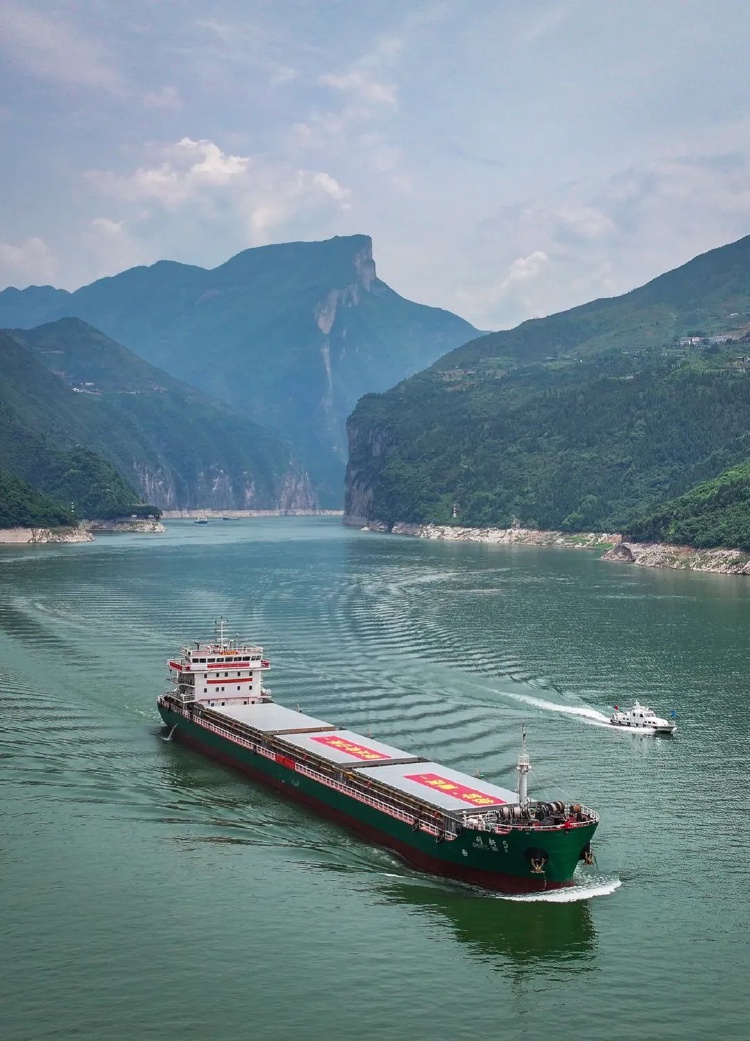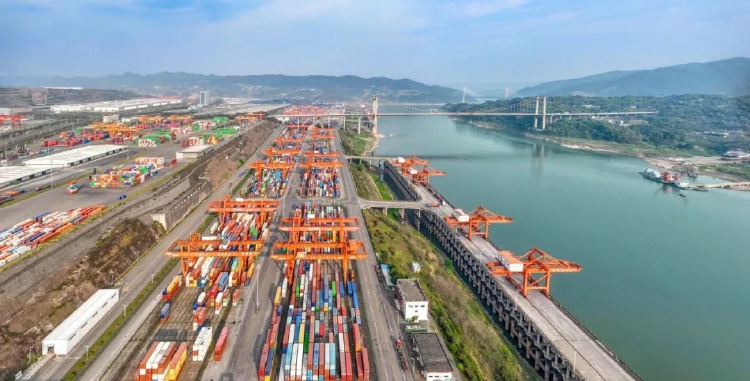 Bridging News
Bridging News
10,000-Tonne Vessel Reaches Chongqing, First to Navigate Upper Yangtze River
Chongqing - A 10,000-tonne vessel recently reached Chongqing, southwest China, marking the first time a ship of this size has navigated the upper Yangtze River.

On May 8, Innovation 5 navigated through the Kuimen of the Three Gorges Reservoir in Fengjie County, Chongqing. (Photo/Long Fan)
Departing on April 24 from Zhejiang Province's Zhoushan Port with over 5,000 tonnes of imported food, the Innovation 5 traveled through the Three Gorges Dam, showcasing the new Chongqing-Zhoushan river-sea route. This first-ever route in the upper Yangtze took 15 days, setting a precedent for future navigation.
This liquefied natural gas (LNG) dual-fuel-powered vessel operates entirely on LNG during its voyage, achieving a 23% fuel cost savings. Traditional ships with a 7-meter draft have struggled to meet the Three Gorges Locks' 4.3-meter draft requirement, but the Innovation 5 was specifically designed to navigate these challenging waters.
Since 2021, the Port and Logistics Office of the Chongqing Municipal People's Government and the Wuhan Innovative Jianghai Transport Limited Company have collaborated on designing and building these specialized ships, with Innovation 5 being one of the first to operate.
The office highlighted that direct shipping routes have reduced the need for multiple barges, cut transportation times by about 20 days, and lowered cargo loss rates to under 0.3%.

The Chongqing-Zhoushan direct river-sea route has reduced transit times between Chongqing and Ningbo-Zhoushan Port by 20 days. (Graphic/Zheng Ran)
Chongqing is strengthening its key Yangtze River shipping hub role by improving port facilities and launching new routes. Guoyuan Port now connects with Yunnan, Guizhou, and Sichuan through a rail-river network spanning China's southwest and northwest.

On May 5, the container terminal at Chongqing's Guoyuan Port ran smoothly. (Photo/Zhang Jinhui)
Li Wenjie, a professor at Chongqing Jiaotong University, suggests using drones and satellite remote sensing to improve navigation and boost the Yangtze River's shipping capacity. He also emphasizes eco-friendly innovations like 10,000-tonne new energy electric bulk carriers and shore power facilities to reduce environmental impact.
Li also proposes using big data, IoT, and AI to develop smarter shipping routes and ports along the Yangtze. He highlights the potential of unmanned ships and autopilot technologies to enhance river transport safety and efficiency.
Chongqing should enhance global shipping collaboration, facilitate trade and investment, and leverage the Yangtze River Golden Waterway for industrial reallocation. Li advocates for deeper integration with the Belt and Road Initiative, synergizing with the New International Land-Sea Trade Corridor and the China-Europe Railway Express to strengthen global trade links.
 Related Stories
Related Stories